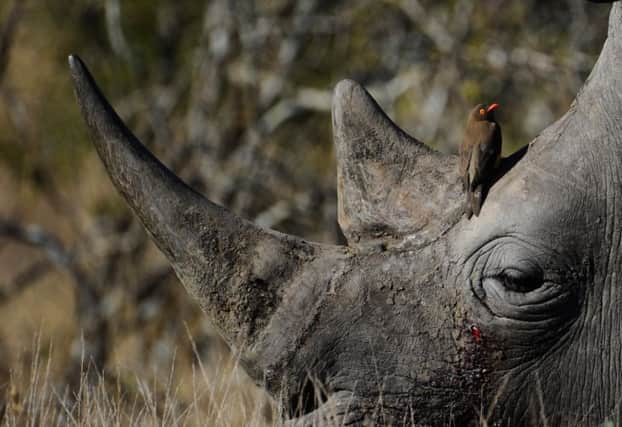Gunfire detection system to save African wildlife


The stakes are high in the country’s flagship reserve, as rhinos are being slain in escalating numbers for their prized horns, alarming both conservationists and the government given that wildlife in South Africa is an important tourist draw.
“ShotSpotter”, a hi-tech product of the private California firm SST Inc, has previously been used in crime-ridden urban US neighbourhoods to alert police to gunfire.
Advertisement
Hide AdAdvertisement
Hide AdIn South Africa it has already yielded the arrests of an undisclosed number of poachers this year.
“This is my 14th war and the one I am determined to win,” said Otch Otto, a former soldier and UN peacekeeper who is now using his combat skills as Kruger’s joint operations manager on the poaching front lines.
As part of the pilot project, microphones have been planted in undisclosed areas of the vast park the size of Israel. When a shot is fired the origin of the sound is triangulated and sent to the service-provider in the US.
Coordinates are then relayed to a Kruger operations centre within 30 seconds, making it possible to deploy rangers and helicopters with precision.
ShotSpotter can detect gunshots up to two miles away, less if a weapon is equipped with a suppressor, or “silencer”.
On average, it can locate to within 33 feet from where a firearm has been discharged.
The company says it is the first time the technology has been employed outside an urban environment.
Drones and other hi-tech surveillance tools have also been used in the escalating battle with poachers, but the thick bush and high animal densities can thwart 21st century technologies.
Advertisement
Hide AdAdvertisement
Hide Ad“Our opponents are skilful, formidable people who know how to navigate in the thick of the night, taking cover under leaves and grass,” Mr Otto said in his “war room”, plastered with maps of the park, which lies in the country’s north east.
“You can’t win this war with helicopters and drones, the bush is too dense,” he added.
More than 700 rhinos have been slain for their horns so far this year in South Africa – over 450 of them in Kruger.
More than 1,000 were poached last year, three times the tally in 2010, to meet soaring demand for rhino horn, coveted as an ingredient in traditional medicine and as a status symbol in fast-developing Asian economies such as China and Vietnam.
South Africa is the epicentre of the poaching surge because it contains the vast majority of the world’s rhinos.
Elsewhere in Africa, elephants are being poached relentlessly for their tusks.
Kruger has between 8,400 and 9,600 white rhino and there are plans to move 500 of them out of the park to safety.
Most poachers slip into Kruger via the park’s 220 mile eastern border with Mozambique, where trade in rhino horn provide an income to impoverished villagers.